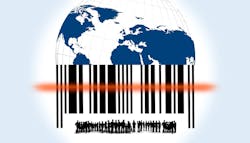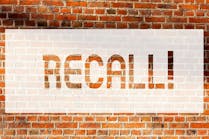Back in the day you may have used coins or branded tokens to reward yourself at the local arcade with some Airheads, Bottlecaps and Gobstoppers as well as a few rounds of Asteroids, Pole Position and Q*Bert.
Fast forward to administrative, clinical, financial or operational executive life and you likely find life a bit more … complicated and less … dynamic. All teched out with budgets, projects, deadlines, responsibilities, life seems to be driven by that even more dreaded Scarlet Letter (with apologies to Hester Prynne and to anything Amazon-related): A … for Accountability.
During this Age of Automated Activity in healthcare operations, administrators and clinicians alike are besotted by buzzwords like augmented reality, blockchain, drones (no, not the staff in the trenches), holographic multi-dimensional imaging, self-driving or self-operating this or that. It’s enough to motivate the fictional futuristic captain of the Federation Starship U.S.S. Enterprise to smirk, pat us on the heads and chime, “How quaint.”
Perhaps for some of us there remains a fondness for those halcyon days of small prizes stuffed into cereal or Cracker Jack boxes, or acquired by mail for a stack of boxtops. How gleeful. Simple benefits brought great delight.
These days in the healthcare industry we get all jazzed up about cool tech, discounts, dividends, gainsharing, pay raises, “prebates,” rebates and such. But they seem to add too much paperwork – electronic or otherwise – to the pure enjoyment of a transaction.
What if we could resurrect some of those rewarding schemes from our childhood as a clandestine way of modifying behavior? A few companies have emerged with reward programs to encourage patients to take their meds, make their follow-up doctor visits, complete and submit their paperwork. Think of it as Pavlovian patient care. Why, I’m salivating at the mere thought.
As part of these incentive programs, when patients follow their prescriptions and protocols they earn “digital tokens” they can “spend” on whatever the token provider offers them. Who knows whether this “token economy” (pun intended) will gain(share) in popularity as much as the so-called gig economy.
But what if Supply Chain were to offer a similar incentive (call it a SCincentive!) for performance improvement in the storeroom or warehouse, on the nursing floors, within the surgical suites?
Inventory management staffers who go a week without a stockout anywhere on the shelves earn a stack of digital SCitcoins. Clinicians who actively participate in value analysis projects involving product evaluation or process modification earn their own stacks that they could cash in on additional equipment-related consummables, for example. Yes, it’s a bit like gainsharing but clearly not as fun. In fact, some gambler in the warehouse might even conceive a way to manage an internal black market of SCitcoin distribution. Of course, if Supply Chain were to operate this program using blockchain they could fulfill two aims: Make sure the SCincentive scheme remains honest and fair, and test out the validity and reliability of blockchain to boot!
The Supply Chain role in any healthcare organization can be boiled down to a simple algebraic expression that goes something like this:
Controlling expenses = Acquiring stuff + modifying behaviors + x2.
Now solve for x.

Rick Dana Barlow | Senior Editor
Rick Dana Barlow is Senior Editor for Healthcare Purchasing News, an Endeavor Business Media publication. He can be reached at [email protected].





